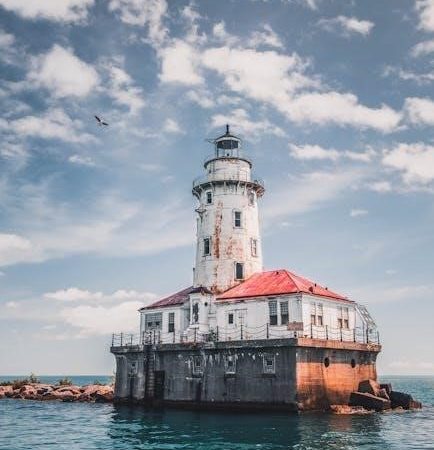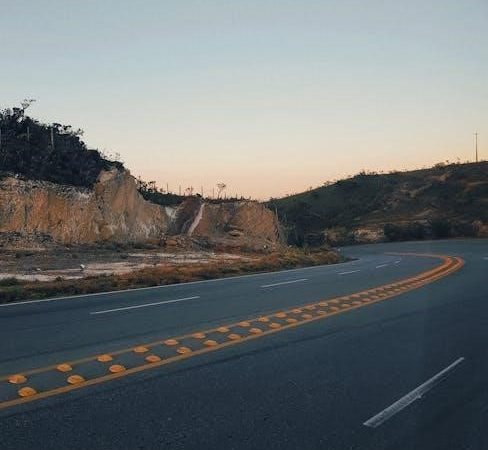car tint guide
Car Tint Guide⁚ A Comprehensive Overview
This guide provides a complete overview of car window tinting, covering legal aspects, tint percentages, heat rejection, and nighttime visibility impacts. We explore choosing the right tint, finding reputable installers, and maintaining your tint for optimal performance and longevity. Understanding these factors ensures safe and legal tinting.
Understanding Window Tint Laws
Window tint laws vary significantly by state and even sometimes by region within a state. These laws primarily regulate the amount of visible light transmission (VLT) allowed through your vehicle’s windows. VLT measures how much light passes through the tint, with higher percentages indicating more light transmission and lighter tint. Many states have stricter regulations for front side windows (driver and passenger) compared to rear windows and the back windshield, prioritizing driver visibility and safety. Failure to comply with these laws can result in fines or even the removal of your tint. Before tinting your windows, it is crucial to research your state’s specific regulations to avoid legal issues. Websites and resources dedicated to car window tinting often provide up-to-date information on state-specific laws, including VLT percentages allowed for each window type. This research will ensure you choose a tint that complies with the law while meeting your personal preferences for privacy and heat reduction.
State-Specific Regulations⁚ A 50-State Breakdown
Navigating the diverse landscape of window tinting laws across the United States can be challenging. Each state establishes its own specific regulations, creating a complex patchwork of legal requirements. These regulations often differ significantly, with some states having considerably stricter rules than others. For instance, the permissible VLT (Visible Light Transmission) percentage for front side windows can vary widely, ranging from a high of 70% in some states to significantly lower percentages in others. Similarly, regulations concerning rear windows and windshields may also differ. Some states may allow nearly any level of tint on rear windows to enhance privacy, while others maintain stricter limitations. To ensure compliance, it’s essential to consult a comprehensive, up-to-date resource that details the specific VLT requirements and any additional restrictions for each state. This will avoid costly fines and legal repercussions associated with non-compliant window tinting.
Legal Limits⁚ Front, Rear, and Back Windows
Understanding the legal limitations on window tinting is crucial for compliance. Most jurisdictions differentiate between front and rear windows, often imposing stricter limits on front side windows (driver and passenger) to maintain adequate visibility for the driver. These limits are usually expressed as a Visible Light Transmission (VLT) percentage, indicating the amount of light that can pass through the tinted window. A higher VLT percentage means more light passes through, resulting in a lighter tint. Rear windows and the back windshield often have less stringent regulations, allowing for darker tints. However, even these windows may have legal limits. Some states might allow any level of tint on rear windows, while others might impose restrictions. Always check your state’s specific regulations to ensure that your chosen tint level complies with the law. Failure to comply can result in fines or even vehicle inspection failure.
Visible Light Transmission (VLT)⁚ What It Means
Visible Light Transmission (VLT) is a crucial measurement when it comes to understanding car window tint legality and effectiveness. Expressed as a percentage, VLT quantifies the amount of visible light that passes through the window tint. A higher VLT percentage indicates a lighter tint, allowing more light to penetrate, while a lower percentage signifies a darker tint, blocking more light. For instance, a 70% VLT tint allows 70% of visible light to pass through, leaving 30% blocked. This is often the minimum legal limit for front side windows in many states, prioritizing driver visibility. Conversely, rear windows often have less stringent VLT requirements. The VLT percentage directly correlates with the tint’s darkness and its impact on visibility and heat reduction. Understanding VLT is key to choosing a tint that balances privacy, heat reduction, and legal compliance. Always confirm your state’s specific VLT regulations before installing any window tint.
Measuring Tint Percentage⁚ Methods and Standards
Accurately measuring the percentage of a car window tint involves specialized tools and methods. The most common method utilizes a VLT meter, a device that measures the amount of visible light passing through the tinted window. This meter, often used by tint installers and law enforcement, provides a precise VLT percentage reading. There are different types of VLT meters available, with varying levels of accuracy and features. Standardized procedures are followed to ensure consistent and reliable measurements, minimizing errors caused by factors such as ambient light conditions. These standards often involve placing the meter at a specific distance from the window and taking multiple readings to obtain an average. The results are then compared to legal limits to confirm compliance. It’s important to note that self-measurement using non-professional tools may not provide accurate results, and relying on visual assessment alone can be unreliable. For legal purposes and to ensure accurate tint application, it is recommended to have the VLT measured by a professional.
Exceptions and Special Permits
While most states adhere to standardized window tint laws, exceptions and special permits exist for specific circumstances. Medical conditions, such as photosensitivity or other light-related sensitivities, can often justify exceptions to standard VLT requirements. Documentation from a qualified medical professional is typically needed to support such requests. Law enforcement and emergency vehicles might also receive exemptions due to operational needs, allowing for darker tints to enhance visibility and safety during nighttime operations or in high-glare situations. These exceptions often require specific markings or identification to differentiate them from standard vehicles. Additionally, some states might grant temporary permits for specific events or periods, allowing for temporary deviations from standard tint regulations. The process for obtaining these exceptions or permits varies by state, requiring drivers to contact their local Department of Motor Vehicles (DMV) or equivalent agency for specific guidelines and application procedures. Always ensure compliance with all applicable state laws and regulations.
Consequences of Illegal Tinting
Driving with illegally tinted windows can lead to various consequences, depending on the specific state and the severity of the violation. The most common consequence is a traffic ticket, resulting in fines that can range from minor to substantial amounts. These fines can vary significantly between states, and repeat offenses typically incur higher penalties. In some jurisdictions, the vehicle may be impounded until the illegal tint is removed, adding impound fees to the overall cost. Furthermore, failure to comply with legal tint requirements can impact insurance premiums. Insurance companies may consider illegal tinting a risk factor, leading to increased premiums or even policy cancellations. In extreme cases, particularly involving significantly dark tints that severely impair visibility, more serious penalties may be imposed. These penalties can extend to license suspension or revocation, depending on the severity of the violation and the driver’s history. Therefore, it’s crucial to understand and adhere to your state’s window tinting regulations to avoid potentially costly and inconvenient consequences;
Choosing the Right Tint Percentage
Selecting the appropriate window tint percentage involves balancing several factors. Consider your local laws and regulations, as permissible tint levels vary significantly by state and even by window location within the vehicle. Darker tints offer greater privacy and heat reduction, but they can also compromise nighttime visibility and potentially violate legal limits. Lighter tints provide less heat reduction but maintain better visibility in low-light conditions and are more likely to comply with all legal restrictions. Personal preference plays a role, with some drivers prioritizing privacy while others prioritize visibility. The climate also influences the decision; drivers in hotter climates may prefer darker tints for enhanced heat rejection, while those in areas with frequent nighttime driving may prefer lighter tints for improved visibility. Think about the car’s interior color; darker interiors might benefit from lighter tints to prevent excessive darkness inside, whereas lighter interiors may tolerate darker tints. Ultimately, the optimal tint percentage is a compromise between legal compliance, desired heat reduction, personal preference, and safety considerations, especially at night.
Tint Darkness and Heat Rejection
The darkness of a car window tint, measured by its Visible Light Transmission (VLT) percentage, directly impacts its heat rejection capabilities. A lower VLT percentage (e.g., 20%) indicates a darker tint that blocks more sunlight, resulting in significantly reduced heat entering the vehicle. This can lead to a cooler interior, especially beneficial in hot climates. Conversely, higher VLT percentages (e.g., 70%) represent lighter tints that allow more sunlight to pass through, resulting in less heat rejection but improved visibility, particularly at night. The relationship isn’t perfectly linear; the type of tint film also influences heat rejection. Ceramic films, for example, are known for their superior heat-blocking properties compared to dyed or metallic films of the same VLT. Therefore, while a darker tint generally provides better heat rejection, the specific film’s composition and technology are equally crucial in determining the overall effectiveness of heat reduction. Choosing the right balance between darkness and heat rejection requires careful consideration of personal preferences and local climate conditions.
Impact on Nighttime Visibility
The darkness of your car window tint significantly affects nighttime visibility. Darker tints, while offering benefits like heat reduction and privacy during the day, can severely compromise visibility after sunset. Reduced light transmission makes it harder to see clearly through the windows, increasing the risk of accidents. This is particularly true for front side windows, where clear vision is crucial for safe driving. While rear window tints have less impact on the driver’s direct view, they can still hinder visibility when reversing or changing lanes. The effect is compounded by poor weather conditions like rain or fog, where even lighter tints can reduce visibility. Regulations often set minimum VLT requirements for front windows to mitigate this safety concern. Drivers should prioritize safety and consider the trade-off between the benefits of darker tint and the potential for reduced nighttime visibility. Choosing a tint with a higher VLT percentage for front windows is usually advisable to maintain sufficient visibility at night and in adverse weather conditions. This balance ensures both comfort and safety.
Finding a Reputable Tinting Company
Selecting a trustworthy car window tinting company is crucial for a professional and long-lasting result. Begin by seeking recommendations from friends, family, or online reviews. Check for certifications and affiliations with reputable organizations. A reputable company will offer a warranty on their work and materials, demonstrating confidence in their services. Look for companies with experienced technicians and a history of positive customer feedback. Ensure they use high-quality films and employ proper installation techniques to avoid bubbling, peeling, or other defects. Before committing, request samples of the tint film to assess color and quality in person; Compare quotes from multiple companies, paying attention to the total cost, including any additional fees. Inquire about their process, including preparation, application, and cleanup procedures. A professional tinting company will prioritize customer satisfaction and provide clear communication throughout the entire process. Thorough research and careful consideration will help you find a reputable company that delivers exceptional results and excellent customer service, ensuring you receive the best possible installation.
Maintaining Your Car Tint
Proper car tint maintenance ensures its longevity and optimal performance. Avoid using abrasive cleaners or harsh chemicals that can damage the film. Instead, use a mild soap solution and a soft cloth or sponge for cleaning. Never use paper towels or other rough materials, as these can scratch the surface. When cleaning, gently wipe the tint in a straight line, avoiding circular motions, which might create swirls. For stubborn stains or dirt, a specialized car tint cleaner is recommended. After washing, carefully dry the tint with a soft, clean microfiber cloth to prevent water spots. Avoid rolling down windows too far, especially immediately after installation, as this could cause the tint to lift or peel. Regularly inspect the tint for any signs of damage or peeling. If you notice any issues, contact your installer immediately for repair or replacement. Protecting your car tint from excessive heat, such as prolonged exposure to direct sunlight, is essential to prevent fading or discoloration. Parking in the shade or using a sunshade can help maintain the tint’s appearance. With proper care, your car tint can last for many years, providing continued protection and enhanced aesthetics.
Frequently Asked Questions (FAQs)
Q⁚ Is car window tinting legal everywhere? A⁚ No, window tint laws vary significantly by state and even locality. Always check your specific state’s regulations before tinting your windows. Failure to comply can result in fines or legal repercussions.
Q⁚ How is tint darkness measured? A⁚ Tint darkness is typically measured by Visible Light Transmission (VLT), representing the percentage of light that passes through the film. Higher VLT percentages mean more light transmission (lighter tint), while lower percentages mean less light transmission (darker tint).
Q⁚ Does tint affect nighttime visibility? A⁚ Very dark tints can reduce nighttime visibility, potentially impacting safety. Consider this factor when choosing your tint percentage, opting for lighter tints on front side windows for better visibility at night.
Q⁚ How long does car tint last? A⁚ With proper care and maintenance, high-quality car tint can last for several years, even a decade or more. Factors influencing lifespan include tint quality, installation, and environmental conditions.
Q⁚ Can I install tint myself? A⁚ While possible, professional installation is highly recommended for a flawless, bubble-free result and to ensure the tint adheres correctly and lasts longer. Improper installation can void warranties.





